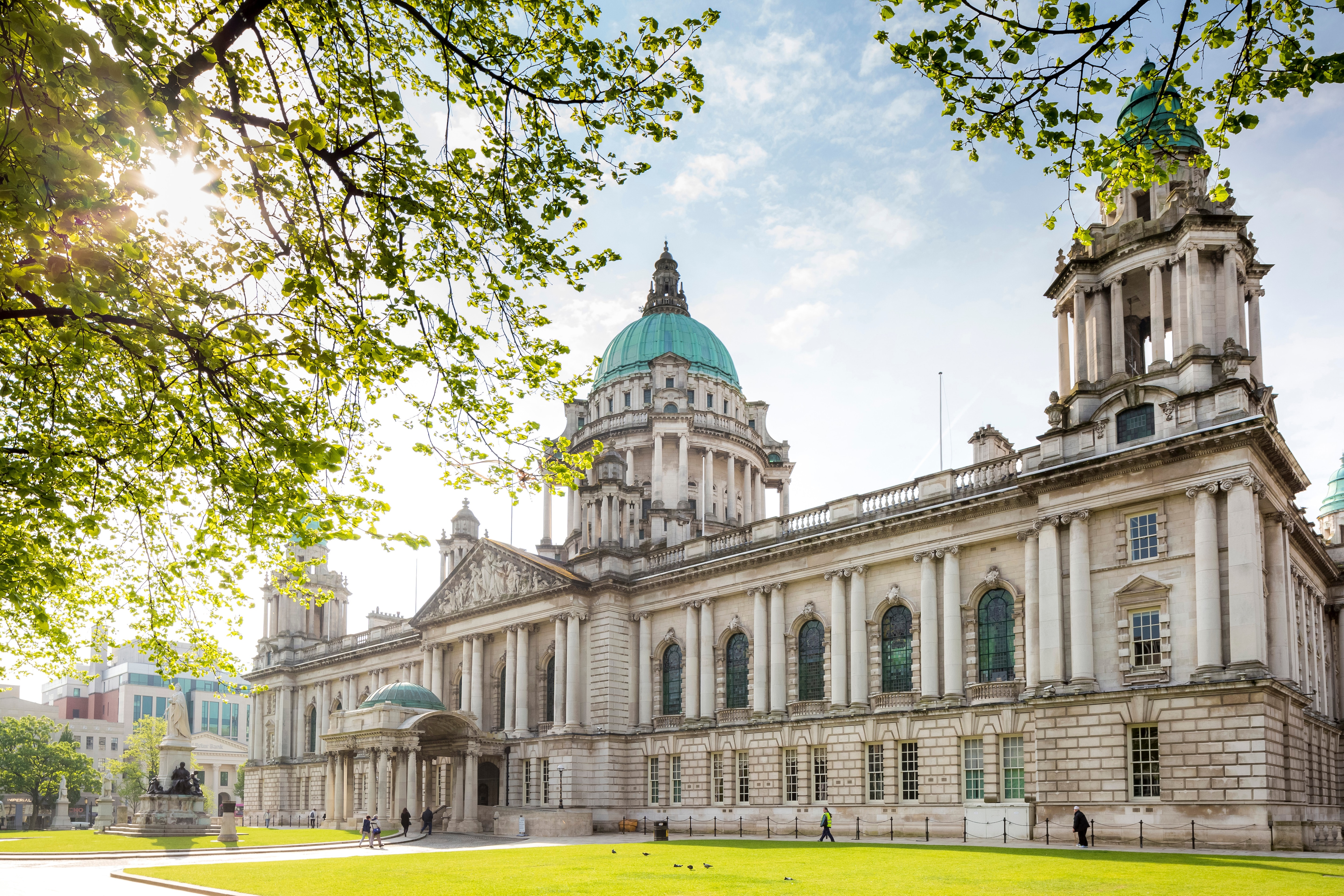
Belfast, Northern Ireland
Description
The capital of Northern Ireland - part of the United Kingdom - Belfast has experienced a renaissance since the Good Friday Agreement of 1998 that promised an end to the decades-old "Troubles" between Catholics and Protestants. Stretching along both sides of the River Lagan, this graceful city of Victorian and Edwardian buildings has become a cosmopolitan tourist destination. Once a major industrial center, Belfast is also your gateway to the rich, Irish countryside of Counties Antrim and Down.
Belfast was an industrial giant in the 19th century, famed for its linen and its shipyards. Explore this exuberant city, marvel at the Giant's Causeway or shop for superb Irish linens.
Points of Interest
- Giant's Causeway
- Antrim Coast
- City Hall & Titanic Memorial
- Belfast Pubs
- Botanic Gardens
- Londonderry
- Downpatrick
- Carrickfergus Castle
More about Belfast, Northern Ireland Points of Interest
-
Giant's Causeway -
Along the Antrim Coast is the world-renowned Giant's Causeway. A UNESCO World Heritage Site, the Giant's Causeway is considered the Eighth Wonder of the World.
-
Antrim Coast -
The Antrim Coast in the north of Northern Ireland, is one of the most scenic coastlines in Britain and Ireland, with breathtaking landscapes, the Carrick-a-Rede Rope Bridge, and the dramatic cliff-side ruins of Dunluce Castle.
-
City Hall & Titanic Memorial -
The Titanic Memorial, located on the east grounds of Belfast City Hall, honors those who died in the RMS Titanic disaster, and includes a list of all those who perished on April 15, 1912.
-
Belfast Pubs -
Belfast Pubs have been the cornerstone of Belfast life for centuries. Some have music, many have good food and all offer a great pint or a comforting hot whiskey and loads of craic (the term for fun and conversation in Irish).
-
Botanic Gardens -
The Botanic Gardens reflect Belfast's Victorian heritage, boasting two notable period buildings, a children's playground, a bowling green, a rose garden and assorted tropical plants and trees.
-
Londonderry -
Originally named Derry, Londonderry is the second largest city in Northern Ireland and lies on the west bank of the River Foyle. It features an almost completely preserved circuit of medieval walls.
-
Downpatrick -
The town of Downpatrick in County Down, Northern Ireland has a strong connection to St. Patrick. It is here that St. Patrick began the conversion of Ireland and built his first church.
-
Carrickfergus Castle -
Considered the first real Irish Castle, Carrickfergus was built in 1180 by the Norman John de Courcy to guard the approach to Belfast.
Best of Giant's Causeway & Antrim Coast
Shopping Opportunities, Moderate Activity, Includes meal
From $259.95
Giant's Causeway
Shopping Opportunities, Moderate Activity
From $184.95
St. Patrick Centre, Down Cathedral & Saul
Shopping Opportunities, Moderate Activity
From $134.95
LOCAL CONNECTIONS:SHEEPDOGS & STORIES
Moderate Activity, Includes meal
From $229.95
Londonderry
Shopping Opportunities, Moderate Activity, Includes meal; Includes snack
From $189.95
A Discovery Exclusive: Ultimate Giants Causeway
Strenuous Activity, Includes meal
From $249.95
Best of Belfast
Moderate Activity, Includes meal
From $199.95
Easy Belfast
Moderate Activity
From $74.95
Easy Belfast (Wheelchair Accessible)
From $74.95
Titanic Belfast® & City Drive
Moderate Activity
From $114.95
Belfast Highlights & Hillsborough Castle
Moderate Activity
From $119.95
Belfast Highlights & Crumlin Road Gaol
Moderate Activity
From $89.95
Game of Thrones Studio Tour
Moderate Activity
From $169.95
Coastal Drive & Glens of Antrim
Easy Activity, Includes snack
From $99.95
Coastal Drive & Glens of Antrim (Wheelchair Accessible)
From $94.95
Belfast Culinary Trail
Strenuous Activity
From $209.95
A Walk Through Historic Belfast
Strenuous Activity
From $114.95
Gobbins Pathway on the Antrim Coast
Strenuous Activity
From $139.95
Belfast City Walk & Pub Life by Night
Strenuous Activity
From $134.95
Belfast by Private Vehicle - Van Class Full Day (With Guide)
Easy Activity
From $1449.95
Belfast by Private Vehicle - Car Class Full Day (With Guide)
Easy Activity
From $1399.95
Belfast by Private Vehicle - Van Class Half Day (With Guide)
Easy Activity
From $949.95
Belfast by Private Vehicle - Car Class Half Day (With Guide)
Easy Activity
From $929.95